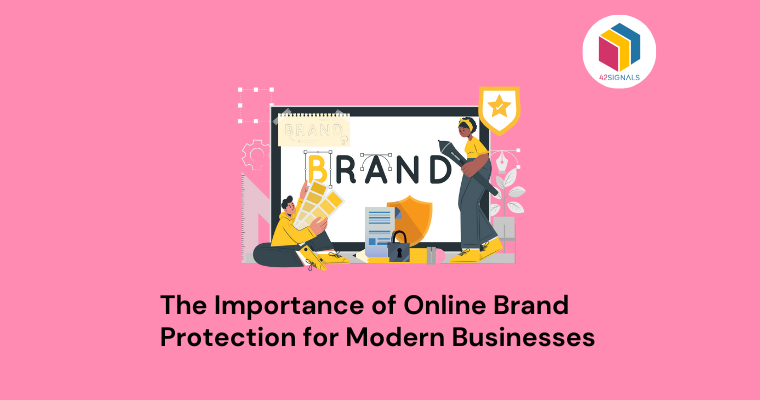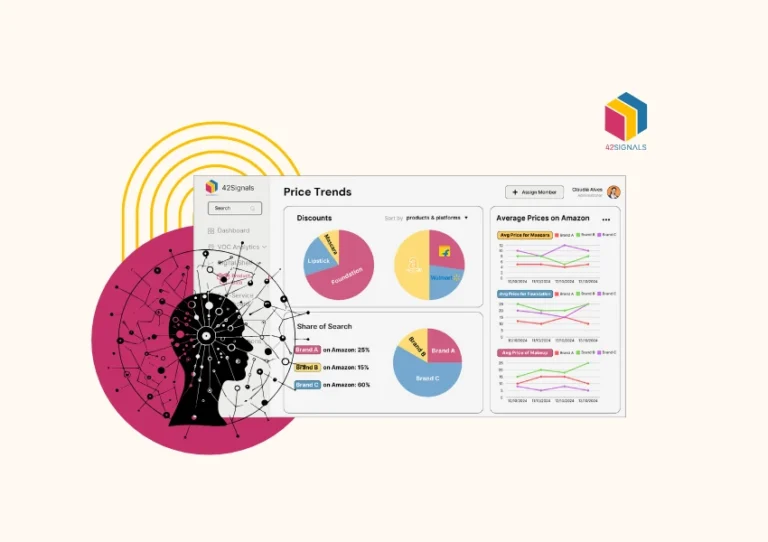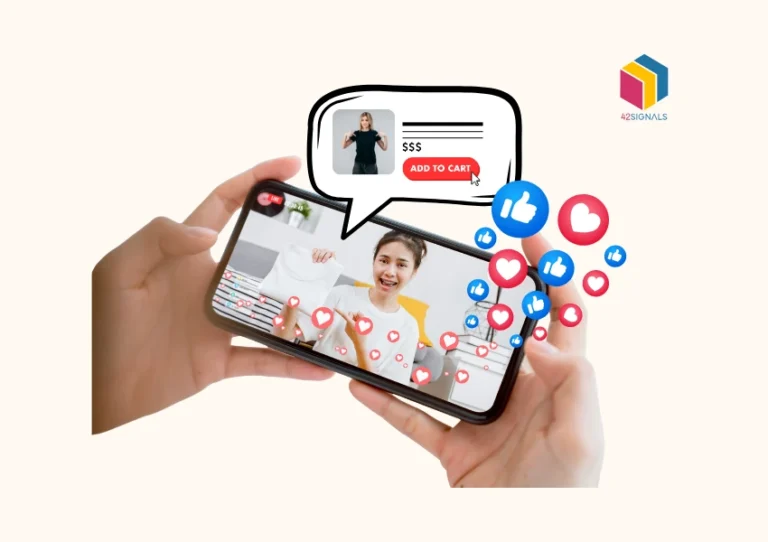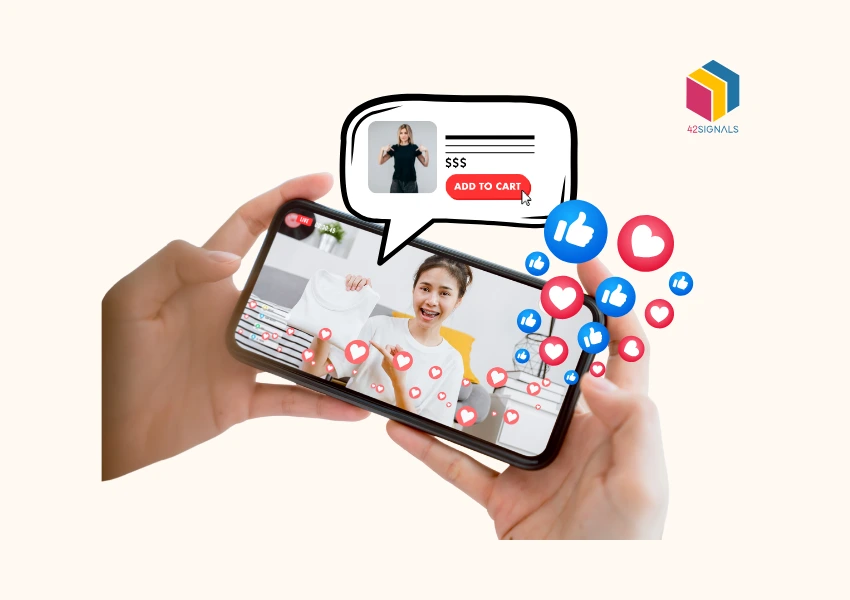In today’s digitally driven world, building a strong brand is essential for any business looking to succeed. However, establishing a powerful brand also means opening yourself up to significant risks if you don’t invest in effective online brand protection.
Online brand protection refers to the strategies and actions taken to safeguard your brand’s assets—such as your trademarks, logos, and intellectual property—from infringement, counterfeiting, and unauthorized use.
In the age of social media, e-commerce, and instant communication, neglecting this area can expose a business to a variety of threats that may erode customer trust, dilute brand equity, or result in financial losses.
The benefits of a solid online brand protection strategy are numerous. It ensures that your brand maintains its integrity, prevents others from unfairly profiting off your reputation, and helps you avoid legal battles with infringers.
Additionally, it allows you to control the narrative around your brand, ensuring that customers encounter consistent, authentic messages when interacting with your products or services.
However, failing to prioritize brand protection can expose your business to substantial risks. These risks include counterfeiting, brand impersonation, domain squatting, and negative associations through fake or compromised accounts. In severe cases, businesses may experience financial losses, tarnished reputations, and legal liabilities if these risks are not addressed promptly and effectively.
Let’s explore what it entails, its benefits, associated risks, and best practices.
Introduction | What is Online Brand Protection?

Image Source: IPSecure
Online brand protection refers to proactively monitoring, detecting, and enforcing actions against unauthorized uses. It also concerns the misuse of your company’s intellectual properties (IP) within the online ecosystem.
Such IP may include logos, slogans, product designs, images, videos, or even specific colors and packaging styles. Protecting your brand aims to maintain control over your brand assets while preserving brand consistency and combating counterfeiting, piracy, and cybersquatting.
Risks Associated With Not Protecting Your Brand
Failing to prioritize brand protection could expose your organization to several potentially damaging consequences, including:
- Loss of revenue due to sales diversion towards counterfeit products and grey markets.
- Damage to your brand reputation resulting from poor quality counterfeits, negative consumer experiences, and tarnishing associations.
- Decreased customer trust leads to reduced loyalty and lifetime value.
- Legal liabilities arising from copyright, patent, or trademark infringements committed by third parties.
- Increased vulnerability to phishing scams and malware attacks targeting both consumers and employees.
Benefits of Effective Online Brand Protection

Image Source: GreyScout
Implementing solid online brand protection strategies offers numerous advantages, among which are:
Enhanced customer trust through consistent brand presentation and messaging
By maintaining a consistent brand image and message across all online platforms, companies can build trust and credibility with their audience. Customers are more likely to trust a brand that presents itself consistently and coherently, as it signals professionalism and attention to detail. Additionally, responding promptly and appropriately to customer feedback and addressing concerns can further strengthen customer trust and loyalty.
Improved ROI via increased conversion rates and repeat purchases
Effective brand reputation management can lead to improved financial performance for businesses. Positive online reviews and ratings can increase consumer confidence, resulting in higher conversion rates and sales. Moreover, satisfied customers are more likely to become repeat customers, generating additional revenue streams for the company. Therefore, investing in brand reputation management strategies can yield significant returns on investment.
Strengthened competitor differentiation drives higher perceived value
Companies can use brand reputation management tools, like 42Signals, to monitor their competitors’ online presence and adjust their own positioning accordingly. By identifying unique selling propositions and highlighting them in messaging and content, businesses can distinguish themselves from competitors and create a stronger brand identity. As a result, consumers may perceive greater value in the brand, making them more likely to choose it over alternatives.
Reduced risk exposure stemming from illegal activities involving your brand
Regular monitoring of online channels can alert companies to potential legal risks related to intellectual property infringement, defamation, or fraudulent activity that helps with online brand protection. Prompt action can prevent reputational damage and limit liability, protecting both the company and its stakeholders.
Better informed decision-making due to online brand protection data
Collecting and analyzing data from various sources such as social media, review sites, and news articles can provide valuable insights into customer preferences, market trends, and competitor behavior. Businesses can leverage this information to inform strategic decisions around product development and pricing. It can also inform promotional campaigns, and customer support, ultimately contributing to long-term success.
Key Components To Protect Your Brand Online
Effective online brand protection typically involves four main components:

- Monitoring: Continuously tracking online platforms like websites, marketplaces, social networks, mobile apps, and domains for possible infringements.
- Investigation: Digging deeper when suspicious activity is detected to assess the scale and nature of the issue before taking further action.
- Enforcement: Pursuing appropriate remedies according to local laws and regulations, often employing cease-and-desist letters, take-down requests, or litigations.
- Prevention: Develop policies and guidelines aimed at reducing future occurrences. Educate internal teams and external partners regarding the proper usage of your brand assets.
Conclusion
Modern businesses operating within the highly interconnected global digital landscape cannot afford to overlook the significance of online brand protection. With countless opportunities come equally daunting challenges requiring careful consideration and strategic planning.
E-commerce analytics is one such tool that helps brands with their brand protection plan by providing comprehensive competitor, product, and seller insights.
Frequently Asked Questions (FAQs)
Why is online brand protection important?
- Reputation Management: Protecting your brand online means safeguarding its reputation against counterfeits, infringements, and negative publicity.
- Intellectual Property Rights Enforcement: Registering trademarks, copyrights, and patents is just the first step in protecting your intellectual property.
- Consumer Safety: Counterfeit goods can pose serious risks to consumers, including health hazards and subpar performance.
- Revenue Protection: Unauthorized selling and counterfeiting erode revenues and cut into profit margins.
What is an example of brand protection?
An excellent example of brand protection comes from the luxury fashion house Louis Vuitton. To combat counterfeiting and preserve its exclusive image, Louis Vuitton has implemented various strategic initiatives, including:
- Trademark Registration: Louis Vuitton has registered numerous trademarks worldwide, covering its iconic logos, patterns, and designs.
- Internet Monitoring: The company uses advanced technology tools to monitor the internet continuously, identifying potential counterfeits and infringements across multiple platforms, such as social media sites, e-commerce websites, and domain registrations.
- Collaborative Efforts: Louis Vuitton works closely with law enforcement agencies, customs officials, and online marketplaces to report and remove listings of counterfeit items. They also participate in international efforts to combat counterfeiting and IP theft.
- Legal Action: When necessary, Louis Vuitton takes aggressive legal action against counterfeiters, often seeking substantial damages and injunctions to halt further violations.
- Customer Education: Through awareness campaigns and educational materials, Louis Vuitton informs customers about the dangers of counterfeit goods and encourages them to purchase only from authorized retailers. This proactive approach strengthens customer loyalty while reducing the appeal of cheap knockoffs.





